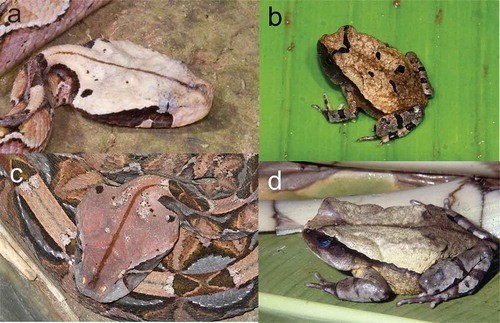

One look at this creature can make one think he is seeing a dangerous species that can bite and even kill him anytime. The truth: he just sees a toad, but an extraordinary toad that does not just simply send sounds in the air. It is a Congolese Giant Toad that looks like a venomous viper. Beyond the normal, this animal can grow bigger than the standard and harmless toad.
What makes the Congolese giant toad look even more dangerous is that it mimics how one of Central Africa's most venomous snakes, the Gaboon Viper's looks and sounds. Scientific studies have it that in nature, lots of animals are mimicking other animals for various purposes. Currently, scientists have unveiled the most recent instance of this unusual imitating ability.
What's this Giant Toad's Mimicking for?
Researchers find that this giant toad copies both the behavior and appearance of the said venomous viper mentioned. In nature, according to studies, the Congolese giant toad imitates the Gaboon viper to stop the predators from catching and eating it. Moreover, scholars also made comparisons between the look of the venomous viper that's prevalent in Southern, central, and eastern Africa, and the toad which originated from the African rainforests.
The said research work discovered that the shape and color pattern of the toad's body is akin to that of the head of the viper. The most remarkable discoveries in this study are the dark brown stripe and a pair of dark brown spots extending down the back of the toad. Other significant observations include the body's triangular shape, the unusually smooth skin for the toad, and a sharp separation between the dark brown flanks and tan back.
How the Copying Takes Place
Since the Gaboon viper can cause deadly bites, potential predators are likely to get rid of the impersonator, the giant toad, to make sure they do not create a fatal mistake. Relatively, some animals' copying is exclusively photographic. However, for the Congolese giant toad, physically copying is just part of the imitation. If a Gaboon viper feels endangered, it frequently inclines its head and produces a long, loud warning hiss before it attacks.
Similarly, those who made a study on Congolese giant toad have observed that this animal also emits a hissing sound resembling that of an air balloon that it releases to scare off its predators. Researchers may have succeeded in presenting the similarities between a Congolese giant toad and the venomous snake. However, many observers still note that it is always essential to be cautious when presenting an interpretation of results that deal with these similarities.
© 2025 ScienceTimes.com All rights reserved. Do not reproduce without permission. The window to the world of Science Times.










